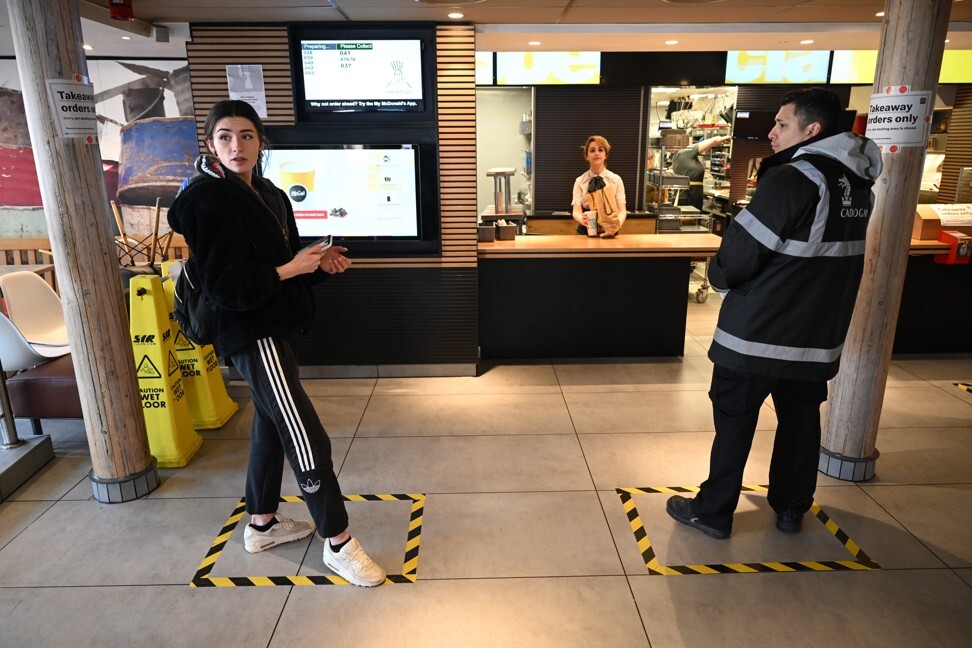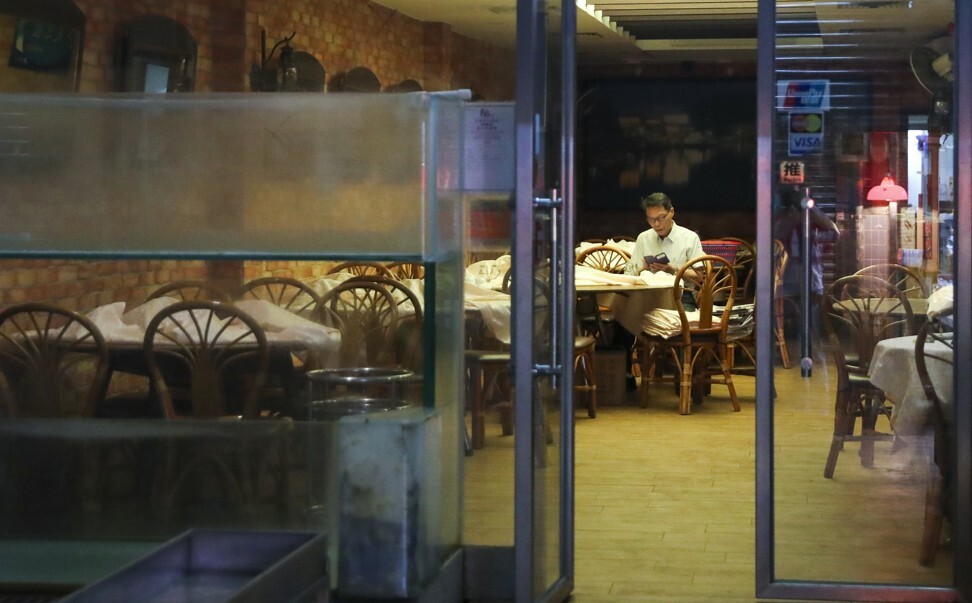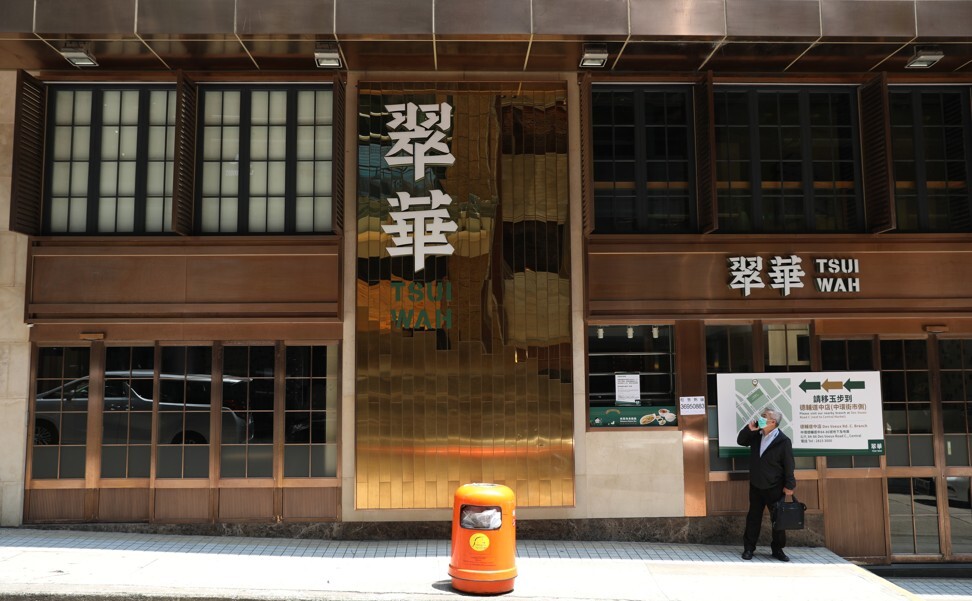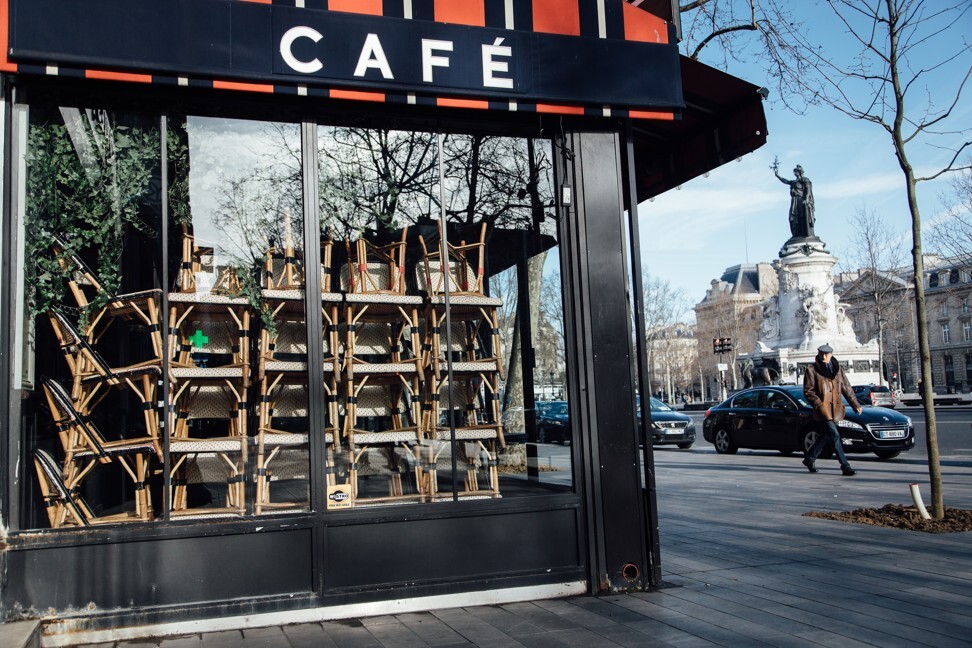
How coronavirus pandemic will change the way we eat out – with China maybe providing the blueprint
- Going out to eat may hold less appeal long after the Covid-19 outbreak is over and many are looking to see how China’s restaurants are dealing with it
- Some restaurants are offering grocery delivery services; Pizza Hut, for example, delivers uncooked steaks, complete with detailed preparation instructions
Restaurants battling for survival in countries hard hit by the coronavirus epidemic are starting to ask the question: even when the lockdown ends, how do we lure back skittish diners? Their margin for error is very small.
“All of a sudden, it’s like: I don’t know if I want someone touching my food,” says Bob Goldin, a partner at consulting firm Pentallect in the United States. Illustrating the scope of the challenge, he adds: “I think we’re all learning we can live without restaurants.”
There’s growing apprehension that restaurants have suddenly lost their appeal on a deeper level in a way that will reverberate well after Covid-19 fades. Consumers, many of whom are cooking at home and facing dimmer economic prospects, are likely be slow to congregate again in bars and restaurants.
Restaurants are one of several industries that will face major hurdles in getting customers comfortable coming back. Retailers, sports leagues and music venues are also evaluating next steps.

Their plight is now a high-profile issue in the US: Democratic presidential candidate Joe Biden said in a recent New York Times opinion piece that “restaurants may need new layouts, with diners farther apart”. President Donald Trump included industry leaders on phone calls last week about how to revive the US economy.
Post-coronavirus, American states will have to balance restaurants’ economic importance with the reality that things cannot return to how they were before.
Don’t cook? Three Hong Kong healthy meal delivery services
To survive, businesses will have to make customers feel safe by spacing them out more – like Starbucks has done in China – and finding ways to minimise human contact, such as digital ordering and payment.
Operators will also look to China, which is farther along the Covid-19 timeline than the US, for guidance. There, restaurants are expanding delivery and even offering grocery delivery as the preference for eating at home persists.
“I would suspect that there is going to be a recommendation to maintain the social distancing for quite some time,” says Dr Erin DiCaprio, an expert on food safety from the University of California, Davis. “I assume that consumers are going to have a lot of fear about going back out to crowded environments.”
While definitive studies on the virus are pending, social distancing has proved to be important in mitigating its spread, she says.

Restaurants will have to create more distance between tables, says Jack Li, CEO of industry research firm Datassential. They will also look to adopt contactless payment methods that do not require handling cash or credit cards, he adds.
Almost all aspects of restaurant operations will need to be addressed. Buffet services may disappear. Workers may need to wear gloves and masks, while utensils may be individually wrapped. Appetisers off shared plates may be discontinued. California Governor Gavin Newsom said last week that temperature checks at the door could become commonplace.
About one-third of US consumers still think it will not be safe to dine out in three months, a recent survey from Li’s Datassential shows. Consumers aren’t ready “for big crowds that make it impossible to keep your distance”, according to the report.

Companies will have to offer more takeaway and delivery with a focus on safety. Pizza Hut is now providing contactless kerbside pickup and next week will begin using tamper-proof safety seals to takeaway containers. Restaurants may also have to keep prices accessible amid widespread unemployment.
While restaurants want to formulate post-crisis plans, the dizzying array of variables makes this hard to do. Unanswered questions include: Will isolation measures be re-enacted if the virus returns? What will unemployment be? What kind of government aid will be available? How willing will consumers be to leave home?
“When you work through the crisis, learn and do the consumer research, it’s hard to know when the new normal will come,” Mike Grams, Taco Bell chief operating officer, says.
Grams says the chain, which is owned by Yum! Brands, has a team working on “the vision coming out of the crisis, so whatever that date is, we are positioned”. For now, he offers few details on what that could look like, instead noting that Taco Bell is dynamic and flexible enough to react quickly after the health crisis.

Companies will be closely watching China for clues to what does and does not work. Yum China Holdings, for example, is trying out catering and delivering raw food.
The owner of Pizza Hut and KFC in China is offering customised menus for corporate clients that allow employees to order food through KFC’s mobile app tailored to their budget. Pizza Hut now delivers uncooked steaks – complete with detailed preparation instructions. Delivery is “contactless”: riders drop the food off and stand two metres away to watch people pick up their items.

In Wuhan, the central Chinese city where the first big outbreak of the virus was reported, restaurants are using live-streaming channels – featuring models eating in their outlets – in an attempt to show consumers that it’s safe to come again.
About 60 per cent of listed restaurant operators in China are at risk of running out of cash within six months, according to data compiled by Bloomberg and company reports. Many small and medium-sized operators have already shut down. Food delivery has boomed. This means larger companies, with their bigger pools of cash and credit, are better poised to survive.
In the US, Michael Halen, a restaurant analyst for Bloomberg Intelligence, warns that many restaurants’ high debt levels make them particularly vulnerable. “We will see chains default on their debt covenants, lots of bankruptcies and lots of closed restaurants in the US,” he says.

There’s yet another factor to juggle: consumers may permanently warm to home cooking.
“People are going regularly to the supermarkets, they’re going regularly to fill their freezers,” says Adnan Durrani, CEO of food manufacturer Saffron Road. “People are really changing their lifestyle in a fast way. I feel like this is a change in behaviour that’s here to stay.”

